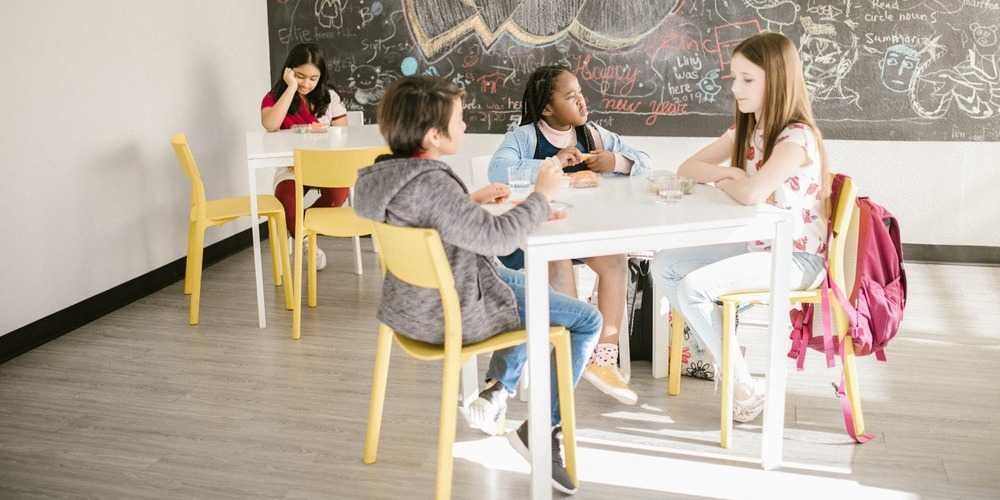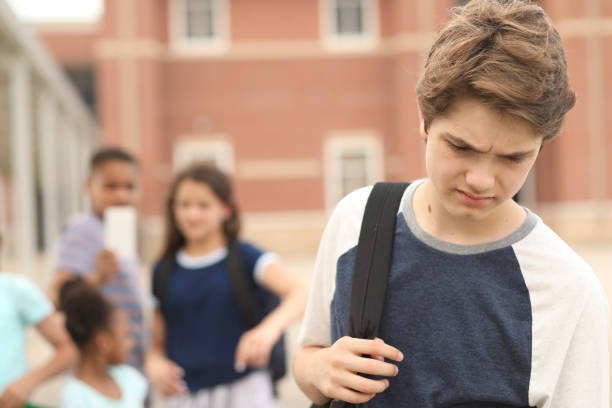
Conscious Mind Therapy for the Treatment of Asperger’s Syndrome and Autism
“Conscious Mind Therapy” is a treatment method used to help children with autism/Asperger’s syndrome break through growth difficulties and lead them back to the correct development track.
There is a set blueprint for children’s development. According to the development of children in Western psychology, basic abilities such as self-awareness, autonomy, boundaries between people and self, self-protection, attachment separation, and communication between ourselves and others have generally been developed in infancy and early childhood. Eastern philosophy also proposes that human instincts include four abilities: consciousness, autonomy, self-creation and self-planning ability. Regardless of Eastern and Western theories, these self-abilities are activated by the individual’s conscious heart.
According to our past observations, most children with symptoms of autism/Asperger’s syndrome have not yet seen their self-awareness mature. Not only do they have difficulty communicating with others, but they also have trouble communicating with themselves (for example, they don’t know their own feelings, needs, and even whether they are full/hungry). Their self-awareness stage often only stays in the infancy stage, and those with high functions do not exceed the early childhood stage.
When children’s self-awareness is closed, they naturally cannot make sufficient connections with their bodies, senses and thoughts, nor can they be aware of their current situation correctly and multi-directionally, let alone make decisions autonomously and easily. Respond and learn new things. In this way, how can they contact the outside world with their heart!
Obviously, to help children grow naturally, it is necessary to activate their inner consciousness; otherwise, how can they be independent and adapt to group life?
The concept of “Conscious Mind Therapy”
“Conscious Mind Therapy” is a therapy about opening up the conscious function of the mind. It was created to help children with weak development of consciousness, especially children who are troubled by autism syndrome (including Asperger’s syndrome, high-functioning autism, autism symptoms, etc.) and teenagers.
The “consciousness” in “consciousness therapy” means consciousness or awareness, and “consciousness” is the conscious mind. In fact, since we are born from the womb, our conscious mind will be in contact with our eyes, ears, nose, tongue and body skin all the time, and we will be aware of the conditions inside our body and the external environment (including people, space and things). Then naturally arise feelings, desires, judgments and thoughts, and finally actively use the body (including limbs and face) and speech to express yourself internally, helping yourself to gain a sense of security, satisfy desires, understand and connect with the outside world. In addition, this conscious mind also includes awareness of one’s own existence and life, awareness that one has a past, present and future, and therefore has the ability to reflect and make plans or dreams for one’s future.
Self-awareness is the starting point of self-awareness and the cornerstone of people’s independent awareness and self-protection. It starts before one year old. After having self-awareness and self-awareness, people continue to develop abilities such as self-creation, focus, self-control, and self-planning. By the time they are nearly three years old, they have formed a preliminary concept of me, you, and others; by this time, children will automatically become self-conscious and relaxed. Step into group life and learn how to get along with peers and learn social norms through interaction.
In the past twenty years of contact with students with Asperger’s disease, high-functioning autism, or symptoms of autism, the author has found that regardless of their intelligence and age, children’s self-awareness development lags far behind. Most of them stay in the early childhood stage, and some even stay in the infancy stage. Those abilities such as consciousness, autonomy, and self-protection that should appear before the age of two have not yet matured. In severe cases, it may be difficult to even be aware of the most basic physiological conditions and intentions, such as: not knowing whether the stomach is full, feeling uncomfortable, or not Ability to make simple choices for oneself, without knowing that one is being violated or not knowing how to push others away…etc.
Most children’s minds are very vague, concerning where their hearts and bodies are, what their bodies are doing, what their eyes are seeing, what their ears are hearing, what their skin is touching, what their mouths are tasting, and what their noses are smelling, or Information such as one’s own feelings, thoughts, etc. are often weak and biased; moreover, these information are constantly changing, so you can imagine how difficult it is for children to respond appropriately and appropriately to the world! If a person cannot grasp their own experience, how can they be expected to be attentive to others and be able to understand and respond to the needs of others!
In “Conscious Mind Therapy”, we will strategically provide them with some physical and sensory stimulation activities in the areas of eyes, ears, nose, tongue, body and mind according to the needs of individual children to activate their minds. Guide children to make natural reactions of emotions, wishes, thoughts and actions, help children get in touch with themselves first, contact the outside world, establish a conscious, autonomous and self-protective brain neural network, and connect themselves with the outside world. We have seen that when children’s inner consciousness is opened, their outward and upward development of the mind will naturally come out. At this time, if the children receive language, thinking, social and sensory integration training, the effect will be twice the result with half the effort. Future growth will be easy, natural and complete.
“Conscious Mind Therapy” Training Purpose
“Conscious Mind Therapy” is based on the blueprint of children’s growth, providing them with an appropriate and timely environment and stimulation to help them return to the normal development track. The training goals include:
- Open up children’s conscious hearts and let them feel the existence of their own hearts.
- Establish children’s self-awareness, including identifying and integrating the experience of their own body, eyes, ears, nose, and tongue and the state of their own thoughts, realizing the difference between themselves and others, and knowing their own environment, so as to respond when needed Protect yourself appropriately or make other choices.
- Establish children’s abilities such as autonomy, self-control, self-creation, self-awareness, self-expression and self-planning.
- Guide children to have spiritual contact with others (especially parents) and receive love from others; and learn to understand others, interact naturally with others, and establish close and appropriate interpersonal relationships.

“Conscious Mind Therapy” training objective
Suitable for all children and adolescents with autism and Asperger’s syndrome. Children and adolescents with symptoms of autism or Asperger’s syndrome who have not yet been diagnosed.
Training content
“Conscious Mind Therapy” provides a variety of classroom activities, including physical sensory, creative, emotional and physical and mental experience activities:
Full body massage, hand therapy, muscle membrane relaxation and rhythmic movement therapy can release the tense energy in the body, rebuild the sense of body and accept the love of others.
- Self-protection drills
- Body, senses and thoughts Mindfulness play, manipulation and whole-brain exercises
- Space exploration game
- Artistic free creative activities
- Exploring experiments and skill learning on everyday things
- Self-character interactive somatosensory game
- Problem solving and action planning challenges
- Self-control focus game

Training effectiveness
- Make more natural eye contact with others
- Call people names. Call them mom/caregiver more often.
- Use more eyes to observe and listen to others
- Emotional fluctuations become more appropriate, for example: those that are too calm become more emotional, those that are too intense become calmer
- When curiosity increases, there will be more “gossip”!
- I speak more often and express my feelings
- There are more exclamations and natural tone when speaking.
- Will explain his situation
- You / me / his position / experience / point of view are naturally clearly distinguished
- Able to make daily small talk
- Answer the question instead of asking the wrong answer
- Like to share your new experiences or daily experiences with others
- Enjoy the changes and start to feel what boredom is
- Will greet others, be curious about other people’s experiences, and ask questions about others
- The tutor talks to the children easily and naturally
- Started to distinguish between true and false, and even started to try to tell lies
- There are many ways to use it when sharing. The first person is “I”
- Know how to tell jokes
- I have a lot more ideas and am willing to express my opinions
- More imitation and paying attention to the people and things around you
- Care more about others, especially family members
- Interested in new things and curious about the world
- Able to express more feelings using words and gestures, and explain the reasons
- My hands and feet are now more flexible, and I can learn new physical activities/operate tools faster than before.
- My body is softer and more lively than before
- When he is working or doing something he likes, he can still respond to others, for example: Mom, what’s wrong? I finished reading the book a while later, and here I am!
- Those who talk less will talk more; those who like to talk will share more appropriate, on-topic and diverse topics.
- Communicate freely with more people
- Can feel one’s past and future
- Know how to reflect on your own actions, for example: “Because I…”, “So I…”, “Next time I…”












